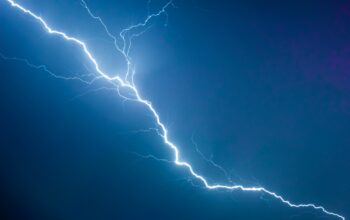There are many potential symptoms of anxiety and panic. Some are powerful enough to send patients rushing to their doctors. The good news is that like all other symptoms of anxiety, these symptoms are utterly harmless and always pass!
Anxiety has been broken down into various labels: Social anxiety, Generalized Anxiety Disorder (GAD) etc. This web-site deals with getting over anxiety in all its forms, and doesn’t find labels such as these particularly relevant. The important thing is to go with what you feel and be aware of it.
Panic Attacks Panic attacks are usually characterised by sudden bursts of (usually) unexpected fear. The symptoms can include palpitations (racing heart), light-headedness, dizziness, vertigo or lack of balance, and an overwhelming need to escape. Commonly hyperventilation (normally very rapid shallow breathing) is present during a panic attack.
The good news is that like all symptoms of panic attacks, these symptoms are completely harmless and always pass!
So what’s the difference between anxiety and a panic attack? Well, for some sufferers the difference might not be that great. A severe attack of anxiety may be very similar to panic. Some people who have a lot of generalized anxiety also have panic attacks, or used to. Many more have anxiety but don’t panic as such. There are as many different permutations as there are sufferers. The important thing is that you have been correctly diagnosed and are ready to take on your problems, whatever label you give them.
Phobias
There is a big difference between a phobia and a strong fear. Many people that talk about phobias actually have fears, they are scared of something but don’t have an anxiety / panic response. Strong fears can often be relieved through education about the object of their phobia. If, for example, someone was squeamish about the idea of a house spider crawling over their hand but spent a few moments in the presence of zoologist who explained to them how harmless a spider is and why it moves so fast they could probably start to let go of their fears. And after challenging their fears once or twice they would probably become neutral to spiders. Would the same thing work for a phobia? Maybe. People with phobias usually have a complete aversion and believe that if they were to come into contact with the object of their phobia they would “go mad” or “lose it”, faint, be sick, or even die. Of course none of these outcomes are true. A person with a fear of spiders may think it will bite or attack them. A person with a phobia may feel that they will lose control, go mad, pass-out, or even die if the spider comes near them. People with phobias are often actually scared of feeling the symptoms of anxiety or panic. In these cases it is more important to deal with the feelings of anxiety and panic than anything to do with the object itself. Gradual exposure to the object can begin later.
If the anxiety or panic has been dealt with then the gradual exposure is normally relatively easy and the phobia can be beaten.
All symptoms of panic are harmless. However horrid they feel, they do always pass.You should always have your anxiety and panic symptoms diagnosed by an understanding healthcare professional. Some symptoms of anxiety, panic and stress can be confused with other disorders and these should be ruled out first. Do not be afraid to ask for a second opinion if you don’t feel your initial diagnosis was accurate.
There can be many symptoms of anxiety and panic and some people find it hard to differentiate between the two.
When I suffered from anxiety I had both mental and physical symptoms.
Physical
- Dizziness
- Sweating
- Laboured breathing
- Difficulty swallowing
- Tingling arms and legs
- Vertigo
- Nausea
- Visual disturbance (e.g. as if just walked into a dark room on a sunny day)
Mental
- Feelings of unreality, as if detached from everything else
- A depressed feeling that it will never pass

